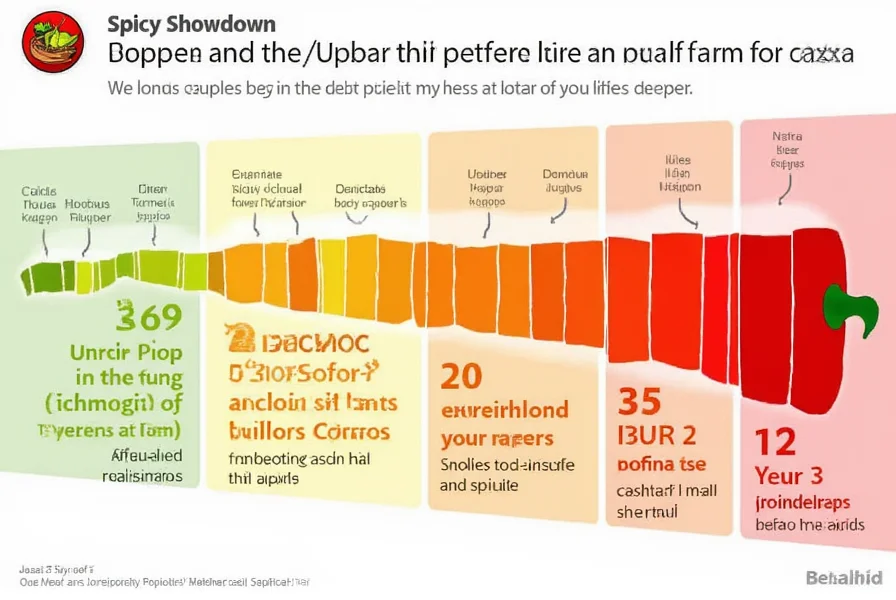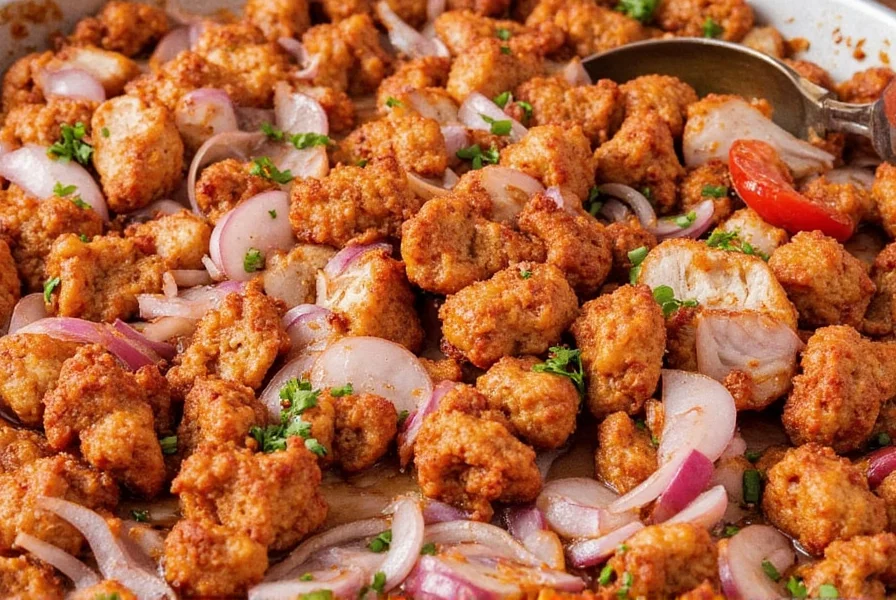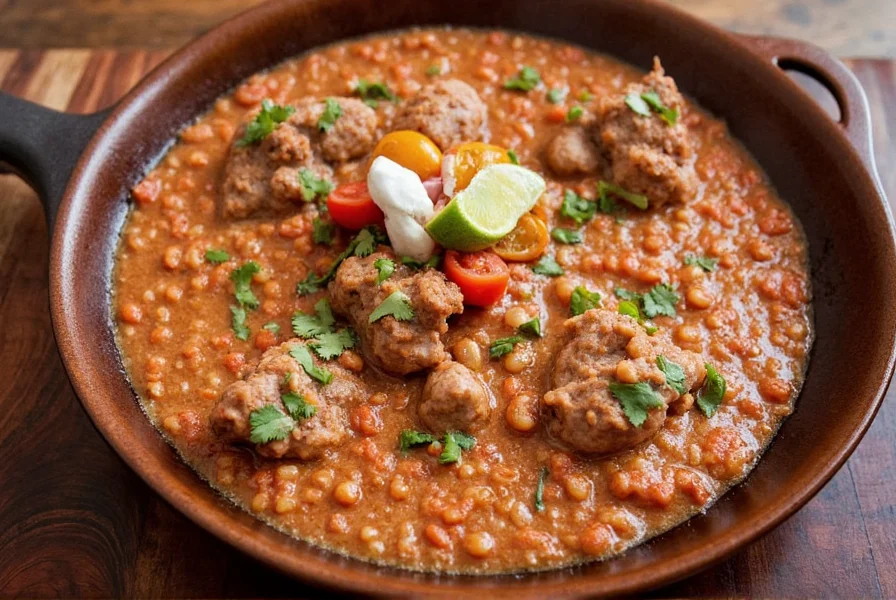Table of Contents
Introduction to Adobo Pork
Adobo pork is a mouthwatering dish deeply rooted in Mexican culinary tradition. This flavorful recipe features tender pork slow-cooked in a rich, aromatic sauce made from chiles, garlic, vinegar, and spices. The term "adobo" comes from the Spanish word "adobar," meaning "to marinate," reflecting the dish's core preparation method. Whether you're a home cook or culinary enthusiast, adobo pork offers a perfect introduction to authentic Mexican flavors.
Served with warm tortillas, rice, or beans, this dish creates a complete meal that balances heat, acidity, and umami. Its versatility makes it ideal for weeknight dinners or special occasions, showcasing how simple ingredients can transform into extraordinary cuisine.
Spice Basics You Need to Know
Understanding key spices is essential for authentic adobo pork. Here's what you need to know:
- Dried Chiles: Guajillo, ancho, and pasilla chiles form the flavor foundation. Guajillo provides mild heat and fruity notes, while ancho adds depth and sweetness.
- Garlic: Fresh garlic cloves deliver superior flavor compared to powdered versions. Roasting garlic enhances its sweetness for complex sauce depth.
- Vinegar: Apple cider vinegar balances richness with bright acidity. White vinegar works too, but apple cider offers more nuanced flavor.
- Oregano: Mexican oregano (not Mediterranean) provides earthy, citrusy notes essential for authenticity. Toast it lightly before adding to release its full aroma.
- Cumin: Whole cumin seeds toasted and ground add warm, smoky depth. Avoid pre-ground cumin for best results.
Adjust spice levels by controlling chile quantity. For milder versions, remove seeds and membranes from dried chiles before rehydrating.
Top 5 Cooking Tips for Adobo Pork
Follow these expert techniques to elevate your adobo pork:
- Choose the Right Cut: Pork shoulder (Boston butt) is ideal due to its fat marbling. This ensures tender, juicy meat after slow cooking.
- Marinate Properly: Allow at least 12 hours (preferably 24) for flavors to penetrate deeply. Refrigerate in a sealed container during marination.
- Control Cooking Temperature: Simmer on low heat (180-200°F/82-93°C) for 2-3 hours. Rapid boiling makes meat tough.
- Thicken Sauce Correctly: Blend cooked chiles and aromatics into a smooth paste before adding to meat. Simmer uncovered for 15 minutes to reduce and thicken.
- Rest Before Serving: Let meat rest 10-15 minutes after cooking. This allows juices to redistribute for maximum tenderness.
| Ingredient | Recommended Product | Features | Target Audience | Suitable Occasions |
|---|---|---|---|---|
| Pork Shoulder | Smithfield Pork Shoulder | Fatty, tender, USDA-certified | Home cooks and professionals | Weeknight dinners, family gatherings |
| Guajillo Chiles | Goya Guajillo Chiles | Consistent quality, easy rehydration | Mexican cuisine enthusiasts | Festive meals, special occasions |
| Garlic | McCormick Fresh Garlic | Pre-peeled, no preservatives | Health-conscious cooks | Daily meals, quick recipes |
| Apple Cider Vinegar | Bragg Organic Apple Cider Vinegar | Unfiltered, raw, with "mother" | Natural ingredient seekers | Traditional recipes, health-focused cooking |
| Mexican Oregano | Spice Islands Mexican Oregano | Authentic variety, potent flavor | Chefs and foodies | Mexican-inspired dishes, gourmet meals |

Selecting premium ingredients ensures restaurant-quality results. Always check expiration dates on dried spices and purchase fresh produce for optimal flavor.
Frequently Asked Questions
What is adobo pork?
Adobo pork is a traditional Mexican dish where pork is marinated in a sauce made from dried chiles, vinegar, garlic, and spices before slow-cooking. The name comes from the Spanish word "adobar" (to marinate), and it's known for its deep red color, complex flavors, and tender texture.
How is adobo pork different from other pork dishes?
Unlike regular pork dishes, adobo features a distinctive marinade with dried chiles and vinegar that creates a unique balance of heat, acidity, and umami. The slow-cooking process breaks down connective tissue while infusing deep flavor, resulting in meat that's exceptionally tender and richly seasoned.
What cut of pork is best for adobo?
Pork shoulder (Boston butt) is ideal due to its high fat content and marbling. This cut remains moist during long cooking times and shreds easily, creating the signature texture of authentic adobo pork. Avoid lean cuts like loin, which become dry.
How long should I marinate adobo pork?
For best results, marinate 12-24 hours in the refrigerator. This allows flavors to penetrate deeply into the meat. While shorter marination (4-6 hours) works, the flavor complexity significantly improves with longer soaking time.
Can I make adobo pork in a slow cooker?
Yes! After marinating and searing the pork (optional but recommended), transfer everything to a slow cooker. Cook on low for 6-8 hours until fork-tender. This method is perfect for hands-off cooking while developing rich flavors.
What sides go well with adobo pork?
Traditional accompaniments include warm corn tortillas, Spanish rice, refried beans, and fresh pico de gallo. For authentic presentation, serve with lime wedges, chopped cilantro, and sliced avocado. A simple green salad balances the dish's richness.
Conclusion
Adobo pork represents the essence of Mexican culinary tradition—simple ingredients transformed through technique into extraordinary flavor. By mastering the balance of chiles, vinegar, and slow cooking, you can recreate authentic restaurant-quality dishes at home. This recipe is more than just food; it's a celebration of culture and craftsmanship.

With the right ingredients, patience, and these proven techniques, you'll master adobo pork in no time. Gather your spices, fire up your stove, and experience the magic of authentic Mexican cuisine.











 浙公网安备
33010002000092号
浙公网安备
33010002000092号 浙B2-20120091-4
浙B2-20120091-4